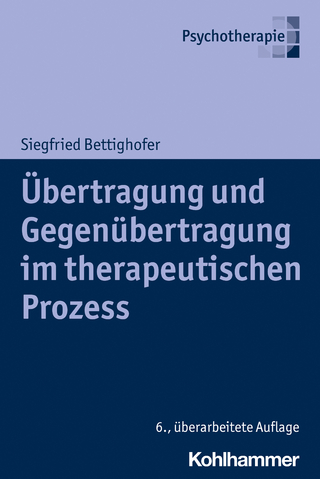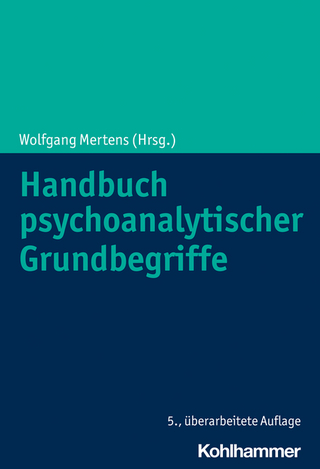
The Routledge International Handbook of Jungian Film Studies
Routledge (Verlag)
978-1-138-66696-2 (ISBN)
Winner of the IAJS award for best edited book of 2018!
The Routledge International Handbook of Jungian Film Studies weaves together the various strands of Jungian film theory, revealing a coherent theoretical position underpinning this exciting recent area of research, while also exploring and suggesting new directions for further study.
The book maps the current state of debates within Jungian orientated film studies and sets them within a more expansive academic landscape. Taken as a whole, the collection shows how different Jungian approaches can inform and interact with a broad range of disciplines, including literature, digital media studies, clinical debates and concerns. The book also explores the life of film outside cinema - what is sometimes termed ‘post-cinema’ - offering a series of articles exploring Jungian approaches to cinema and social media, computer games, mobile screens, and on-line communities.
The Routledge International Handbook of Jungian Film Studies represents an essential resource for students and researchers interested in Jungian approaches to film. It will also appeal to those interested in film theory more widely, and in the application of Jung’s ideas to contemporary and popular culture.
Luke Hockley is Research Professor of Media Analysis at the University of Bedfordshire, UK. He is a practising psychotherapist and is registered with the United Kingdom Council for Psychotherapy (UKCP). Luke is joint Editor in Chief of the International Journal of Jungian Studies (IJJS) and Series Editor for Jung the Essential Guides (Routledge). His recent publications include: Jungian Film Studies: the Essential Guide (Routledge, 2016; co-authored with Helena Bassil-Morozow) and Somatic Cinema: the relationship between body and screen, a Jungian perspective. www.lukehockley.com
List of Contributors; Acknowledgements; Introduction, Luke Hockley; 1) A Jungian textual terroir, Catriona Miller; 2) Dionysus and textuality: Hockley’s somatic cinema for a transdisciplinary film studies, Susan Rowland; 3) Stick to the image? No thanks! Eric Greene; 4) Archetypal possibilities: meta-representations, a critique of von Franz interpretation of fairy tale genre focusing on Jean Cocteau’s retelling of The Beauty and the Beast, Leslie Gardner; 5) Human Beans and the flight from otherness: Jungian constructions of gender in film, Phil Goss; 6) It’s alive: The evolving archetypal image and Mary Shelley’s Frankenstein, Elizabeth Nelson; 7) Music in film: Its functions as image, Benjamin Nagari; 8) Psychological images and multimodality in Boyhood and Birdman, Shara Knight; 9) Feminist film criticism: Towards a Jungian approach', Helena Bassil-Morozow; 10) Teaching Jung in the academy: The representation of comic book heroes on the big screen, Kevin Lu; 11) Horror and the sublime: Psychology, transcendence and the role of terror, Christopher Hauke; 12) Hungry children and starving fathers: auteurist notions of father hunger in American Beauty, Toby Reynolds; 13) Beyond the male hero myth in Clint Eastwood films, Steve Myers; 14) True detective and Jung’s four steps of transformation, Stephen Anthony Farah; 15) Film futuristics: A forecasting methodology, Michael Glock; 16) The Australian lost child complex in adaptation: Kurzel’s Macbeth and Stone’s The daughter, Terrie Waddell; 17) Numinous images of a new ethic: A Jungian eiew of Kieslowski’s The decalogue, Judith R. Cooper and August J. Cwik; 18) The han cultural complex: Embodied experiences of trauma in New Korean Cinema, Amalya Layla Ashman; 19) The outsider protagonist in American film, Glen Slater; 20) Spirited Away and its depiction of Japanese traditional culture, Megumi Yama; 21) Cold comforts: Psychical and cultural schisms in The Bridge and Fortitude, Alec Charles; 22) Cultural hegemonies of forms and representations: Russian fairy tale women and Post-Jungian thought, Nadi Fadina; 23) Feeling film: Time, space and the third image, Luke Hockley; 24) Getting your own pain: A personal account of healing dissociation with help from the film War Horse, Donald E. Kalsched; 25) Healing the holes in time: Film and the art of trauma, Angela Connolly; 26) Discovering the meaning of a film, John Beebe ; 27) Under the skin: Images as the language of the unconscious, Joanna Dovalis and John Izod; 28) Beyond the second screen: Enantiodromia and the running-together of connected viewing, Greg Singh; 29) Anima ludus: Analytical psychology, phenomenology and digital games, Steve Conway; 30) Cinema without a cinema and film without film: the psychogeography of contemporary media consumption, Aaron Balick; 31) Digital media as textual theory: Audiovisual, pictorial and data analyses of Alien and Aliens, Andrew McWhirter; 32) A networked imagination: Myth-making in fan fic’s story and soul, Leigh Melander; 33) The unlived lives of cinema: Post-cinematic doubling, imitation and supplementarity, Kelli Fuery
| Erscheinungsdatum | 24.04.2018 |
|---|---|
| Reihe/Serie | Routledge International Handbooks |
| Zusatzinfo | 2 Line drawings, black and white; 6 Halftones, black and white |
| Verlagsort | London |
| Sprache | englisch |
| Maße | 174 x 246 mm |
| Gewicht | 997 g |
| Themenwelt | Kunst / Musik / Theater ► Film / TV |
| Geisteswissenschaften ► Psychologie ► Psychoanalyse / Tiefenpsychologie | |
| Sozialwissenschaften ► Kommunikation / Medien ► Medienwissenschaft | |
| ISBN-10 | 1-138-66696-3 / 1138666963 |
| ISBN-13 | 978-1-138-66696-2 / 9781138666962 |
| Zustand | Neuware |
| Haben Sie eine Frage zum Produkt? |
aus dem Bereich


